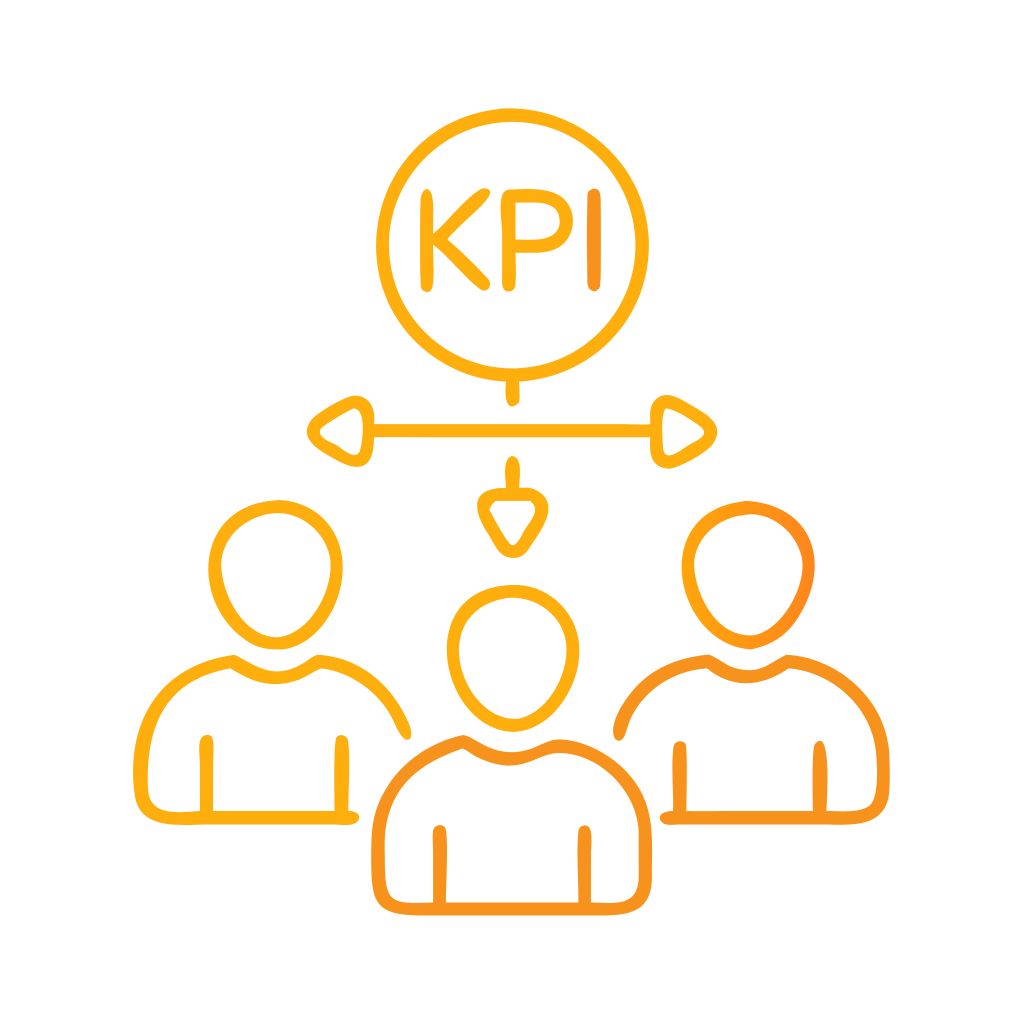Table of Contents
- Understanding Customer Experience (CX)
- The Financial Benefits of Great CX
- How CX Drives Customer Loyalty and Advocacy
- Key Components of an Effective CX Strategy
- Measuring and Improving Your Customer Experience
- Conclusion: The Long-Term Impact of Prioritizing CX
The Importance of Customer Experience: Why CX Matters for Your Business
In today’s hyper-competitive marketplace, customer experience (CX) has emerged as a pivotal differentiator that can make or break a business. Gone are the days when price and product alone could secure customer loyalty. Today, the holistic perception customers have of their interactions with your brand—from the first touchpoint to post-purchase support—plays a crucial role in determining your business’s success. Further to this we know that good service not only creates loyalty but is less expensive to deliver, providing better services at a lower cost or higher margin.
Customer experience encompasses every facet of the targeted customer journey, including pre-engagement, marketing, sales, product usage, customer service and post use. It’s not just about meeting customer expectations but exceeding them to create memorable, positive experiences that foster loyalty and advocacy. A well-executed CX strategy can drive revenue, enhance brand value, and build lasting customer relationships. Conversely, a poor customer experience can lead to customer churn, negative reviews, and a tarnished brand reputation.
This blog post delves into the importance of customer experience, exploring why it matters for your business and how it can be a game-changer in achieving sustainable growth. By understanding and optimizing CX, you can not only meet but anticipate customer needs, setting your brand apart in a crowded market and delivering superior financial or performance returns for your business.
Understanding Customer Experience (CX)
Customer Experience (CX) is the holistic perception customers have of your brand based on their interactions across various touchpoints. It encompasses every facet of the customer journey, from the initial discovery of your brand through marketing and advertising, to the purchasing process, and even post-purchase support. Unlike customer service, which focuses on specific interactions, CX is a broader concept that includes all aspects of a customer’s engagement with your business.
A positive customer experience is not just about meeting customer expectations but exceeding them in ways that foster loyalty and advocacy. It involves understanding and anticipating customer needs, delivering consistent and personalized interactions, and ensuring that every touchpoint—whether digital or physical—resonates with the brand’s promise. This comprehensive approach is crucial because it directly impacts customer satisfaction, retention, and ultimately, your bottom line.
In today’s competitive landscape, where customers have more choices than ever, delivering an exceptional CX can be a key differentiator. Companies that prioritize CX are better positioned to build lasting relationships with their customers, driving both short-term sales and long-term loyalty. By focusing on the entire customer journey and continually refining each interaction, businesses can create memorable experiences that keep customers coming back.
The Financial Benefits of Great CX
Investing in customer experience (CX) isn’t just about making customers happy—it’s a strategic move that can significantly boost your bottom line. Here are some key financial benefits of delivering exceptional CX:
Increased Revenue: Happy customers are more likely to make repeat purchases. According to research, businesses that excel in CX can increase their revenue by 4% to 8% above their market. By providing a seamless and enjoyable experience, you encourage customers to spend more and return frequently.
Customer Loyalty and Retention: Acquiring new customers is often more expensive than retaining existing ones. Great CX fosters loyalty, reducing churn rates and ensuring a steady stream of revenue. Loyal customers are also more likely to become brand advocates, bringing in new customers through word-of-mouth recommendations.
Reduced Costs: Improving CX can lead to cost savings in several areas. For instance, a well-designed website or app can reduce the need for extensive customer support, as customers can find information and resolve issues on their own. Additionally, satisfied customers are less likely to return products or request refunds, saving on reverse logistics and restocking costs.
Competitive Advantage: In a crowded market, CX can be a key differentiator. Companies that prioritize CX often outperform their competitors. By building a reputation for excellent customer service and experience, you can attract more customers and gain a larger market share.
Higher Customer Lifetime Value (CLV): Great CX increases the overall value of each customer. When customers have positive experiences, they are more likely to engage with your brand over the long term, increasing their lifetime value. This not only boosts revenue but also enhances the predictability of future earnings.
In summary, investing in CX is not just a customer-centric strategy; it’s a financial imperative that drives growth, reduces costs, and strengthens your competitive position.
How CX Drives Customer Loyalty and Advocacy
Customer experience (CX) is the linchpin that transforms casual buyers into loyal advocates. When customers have positive interactions with your brand, they are more likely to return, fostering a sense of loyalty that transcends mere transactional relationships. This loyalty is not just about repeat purchases; it’s about creating a community of brand advocates who actively promote your business.
The Role of Positive Interactions
Every touchpoint in the customer journey—from initial awareness to post-purchase support—contributes to the overall experience. When these interactions are consistently positive, customers develop a deep-seated trust in your brand. This trust is the foundation of loyalty. For instance, a seamless online shopping experience, coupled with responsive customer service, can leave a lasting impression that encourages repeat business.
The Power of Advocacy
Loyal customers often become vocal advocates. They share their positive experiences with friends, family, and even on social media platforms. This word-of-mouth marketing is invaluable; it’s authentic and carries more weight than traditional advertising. According to research, 86% of customers who receive a great customer experience are likely to repurchase from the same company and recommend it to others.
Building a Feedback Loop
To sustain loyalty and advocacy, it’s crucial to listen to your customers. Implementing feedback mechanisms such as surveys and reviews allows you to understand their needs and expectations better. Acting on this feedback not only improves the customer experience but also shows customers that their opinions matter, further solidifying their loyalty.
In essence, a robust CX strategy doesn’t just retain customers; it turns them into passionate advocates who drive your brand’s growth through genuine, enthusiastic endorsements.
Key Components of an Effective CX Strategy
4. Personalization
Personalization is the linchpin of an effective customer experience (CX) strategy. In today’s competitive landscape, customers expect interactions that are tailored to their individual preferences and needs. Personalization goes beyond simply addressing customers by their names; it involves leveraging data to create bespoke experiences that resonate on a deeper level.
To achieve this, businesses must harness the power of customer data. This includes tracking purchase history, browsing behavior, and even social media interactions to build comprehensive customer profiles. With these insights, companies can deliver targeted marketing messages, recommend products that align with customer interests, and provide timely support that anticipates customer needs.
The benefits of personalization are manifold. It enhances customer satisfaction by making interactions more relevant and engaging. It also fosters loyalty, as customers are more likely to return to a brand that understands and values them. Moreover, personalized experiences can drive higher conversion rates and increase customer lifetime value.
However, personalization must be executed with care. Overstepping boundaries can lead to perceptions of invasiveness, eroding trust. Therefore, transparency about data usage and robust data protection measures are essential to maintaining customer confidence.
In summary, personalization is not just a nice-to-have; it is a critical component of a successful CX strategy. By making customers feel seen and understood, businesses can create lasting connections that drive growth and loyalty.
Measuring and Improving Your Customer Experience
5. Implementing Feedback Loops
To truly enhance your customer experience (CX), it’s essential to establish robust feedback loops. These mechanisms ensure that the insights gathered from your customers are not only collected but also acted upon effectively. Here’s how to implement feedback loops that drive continuous improvement:
Collect Feedback Consistently: Utilize multiple channels to gather customer feedback, including surveys, social media, email, and direct interactions. Tools like Net Promoter Score (NPS), Customer Satisfaction Score (CSAT), and Customer Effort Score (CES) can provide valuable quantitative data.
Analyze Feedback: Once collected, feedback should be systematically analyzed to identify common themes, pain points, and areas for improvement. Employ text analytics and natural language processing (NLP) to derive actionable insights from qualitative data.
Prioritize Actions: Not all feedback will have the same level of impact. Prioritize actions based on the potential to enhance customer satisfaction and loyalty. Focus on quick wins that can be implemented swiftly, as well as long-term strategic changes.
Close the Loop: Inform customers that their feedback has been heard and acted upon. This can be done through personalized follow-ups, public acknowledgments, or updates in newsletters. Demonstrating that you value and act on customer input fosters trust and loyalty.
Monitor and Adjust: Establish a continuous monitoring system to track the effectiveness of implemented changes. Use real-time analytics to gauge customer reactions and be prepared to make further adjustments as needed.
By embedding these feedback loops into your CX strategy, you create a dynamic system that continuously evolves to meet and exceed customer expectations. This proactive approach not only improves customer satisfaction but also drives long-term business growth.
Conclusion: The Long-Term Impact of Prioritizing CX
In today’s dynamic and highly competitive market, prioritizing customer experience (CX) is not just a strategic advantage—it’s a necessity. The long-term impact of investing in CX is profound, influencing every facet of your business from customer loyalty to brand reputation and financial performance.
When businesses place a premium on delivering exceptional customer experiences, they foster deeper emotional connections with their customers. This emotional bond translates into increased customer loyalty, higher retention rates, and a robust base of brand advocates who are more likely to recommend your products or services to others. Moreover, satisfied customers are often willing to pay a premium for a seamless and personalized experience, directly contributing to revenue growth.
Beyond immediate financial gains, a strong focus on CX cultivates a culture of continuous improvement and innovation within the organization. Employees who see the positive impact of their efforts on customer satisfaction are more engaged and motivated, leading to higher productivity and reduced turnover.
In essence, prioritizing CX is a long-term investment that yields sustainable growth and resilience. It ensures that your business remains adaptable to changing customer needs and market conditions, positioning you as a leader in your industry. By making CX a core component of your business strategy, you not only enhance customer satisfaction but also secure a competitive edge that drives long-term success.
Frequently Asked Questions
What is Customer Experience (CX)?
Customer Experience (CX) refers to the overall perception a customer has of a brand based on their interactions with it. This encompasses every touchpoint in the customer journey, from initial awareness and marketing to post-purchase support and feedback.
Why is Customer Experience important for my business?
Delivering a great customer experience is crucial for any business as it leads to increased customer loyalty, enhanced customer satisfaction, improved customer engagement, and better word-of-mouth marketing. A positive CX can differentiate your brand from competitors and drive business growth.
How does Customer Experience differ from Customer Service?
Customer Service is a component of Customer Experience. While customer service focuses on specific interactions where customers seek help or support, CX encompasses the entire journey a customer has with your brand, including marketing, sales, product usage, and after-sales support.
What are the key benefits of improving Customer Experience?
Improving CX can: 1. Drive revenue and customer lifetime value. 2. Increase brand value. 3. Boost customer loyalty and advocacy. 4. Keep you close to customers and their changing behaviors. 5. Reduce costs and allow for better investment decisions.
How can I measure Customer Experience?
You can measure CX using various metrics such as:
- Net Promoter Score (NPS): Measures customer loyalty and likelihood to recommend your brand.
- Customer Satisfaction Score (CSAT): Gauges customer satisfaction with specific interactions or products.
- Customer Effort Score (CES): Assesses how easy it is for customers to complete a task or resolve an issue.
- Time to Resolution (TTR): Tracks the average time taken to resolve customer issues.
What causes a bad Customer Experience?
Common causes of bad CX include:
- Long wait times.
- Employees who don’t understand customer needs.
- Unresolved issues or questions.
- Excessive automation with little human touch.
- Lack of personalized service.
- Rude or unhelpful employees.
How can I improve Customer Experience in my business?
To improve CX, you should:
- Make listening to customers a top priority.
- Use customer feedback to understand their needs and preferences.
- Implement systems to regularly collect, analyze, and act on feedback.
- Reduce friction in the customer journey and solve specific customer problems.
- Personalize interactions and show empathy towards customers.
What role does technology play in enhancing Customer Experience?
Technology can significantly enhance CX by enabling businesses to connect data from multiple touchpoints, providing a central view of customer interactions. Tools like AI for real-time sentiment analysis, chatbots for instant support, and CRM systems for personalized service can improve the overall customer experience.
How does Customer Experience impact my business’s bottom line?
A positive CX directly impacts your bottom line by increasing customer retention, reducing churn, and encouraging repeat purchases. Satisfied customers are also more likely to recommend your brand to others, driving new customer acquisition and overall business growth.
Can small businesses benefit from focusing on Customer Experience?
Absolutely. Small businesses can benefit greatly from focusing on CX as it helps build strong customer relationships, encourages loyalty, and differentiates them from larger competitors. By delivering personalized and exceptional experiences, small businesses can create a loyal customer base and drive sustainable growth.































